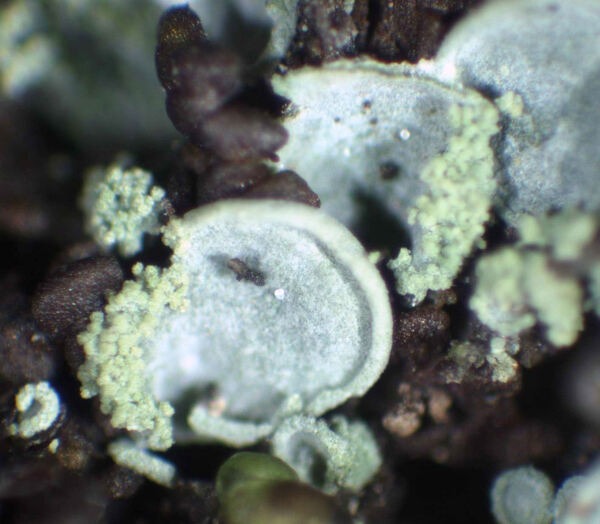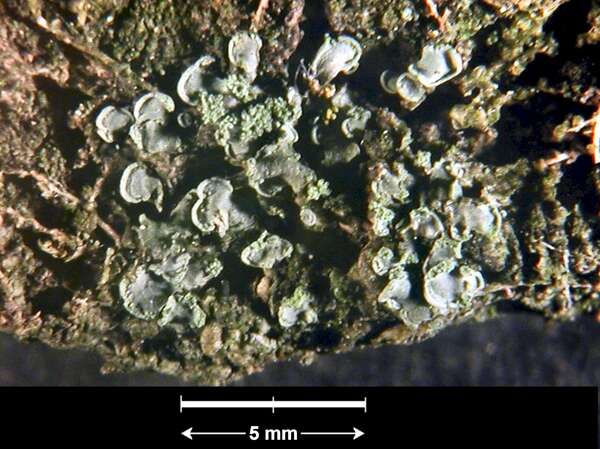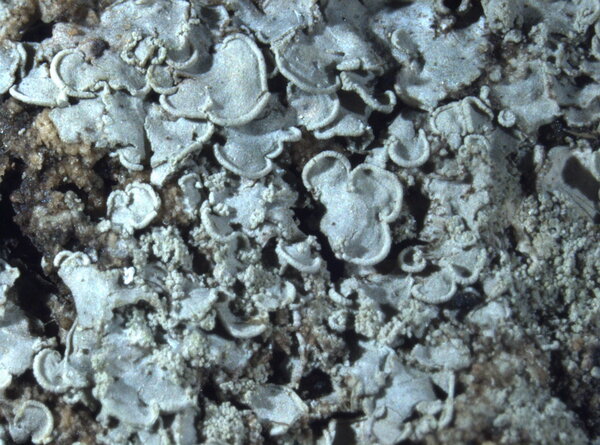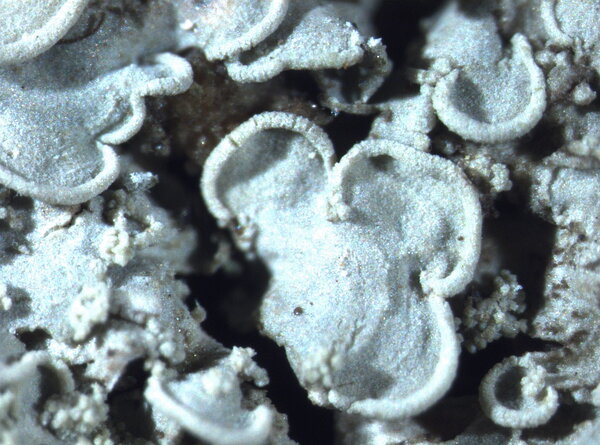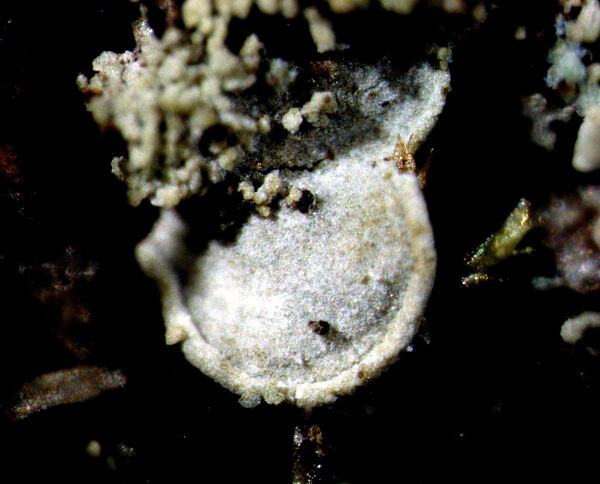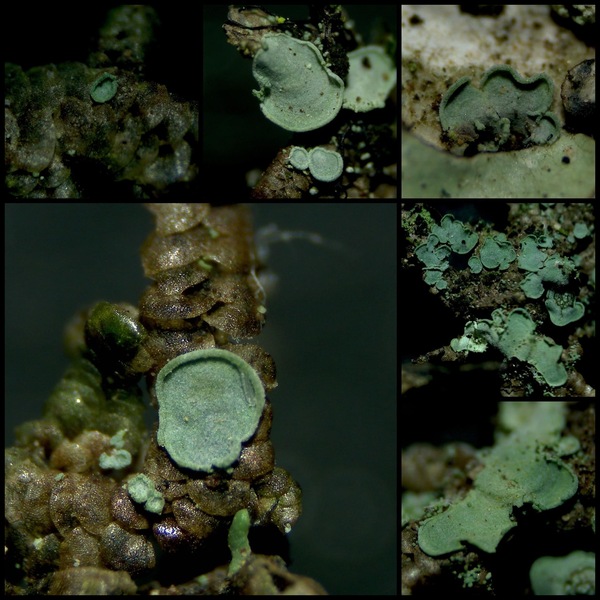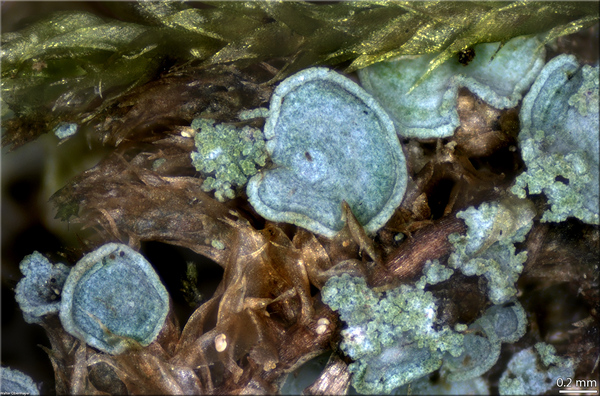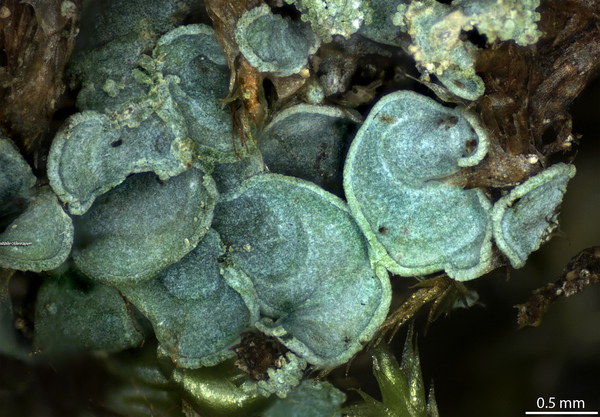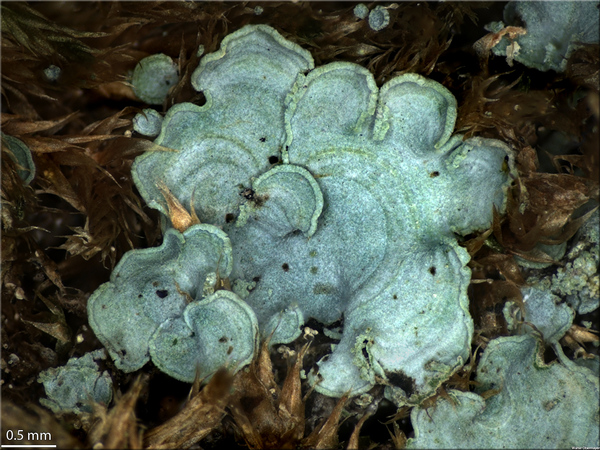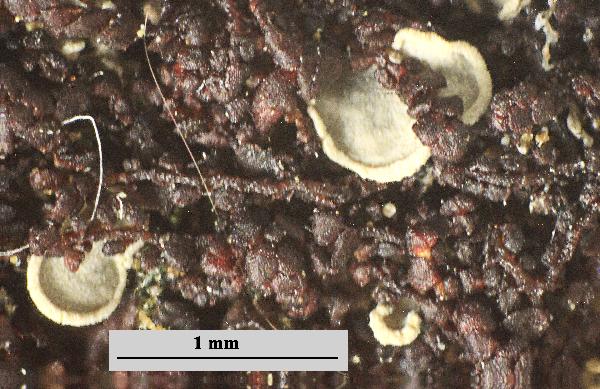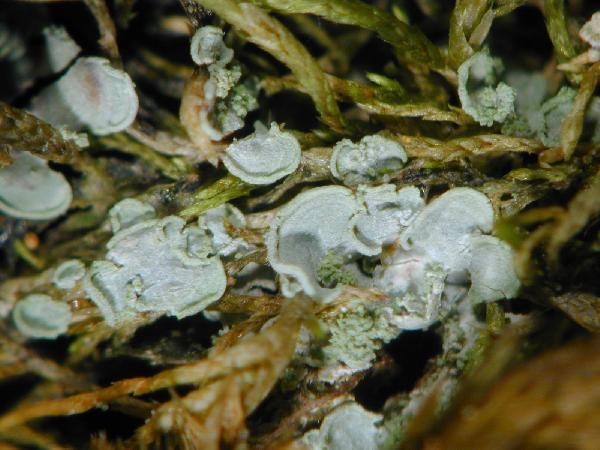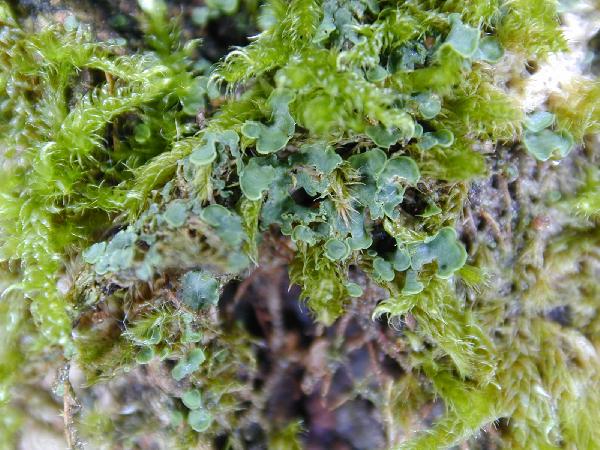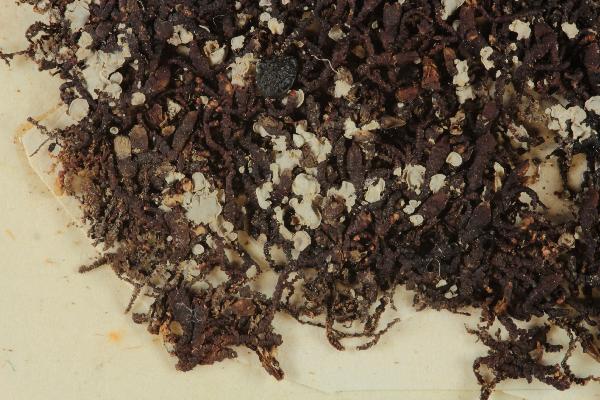Normandina pulchella (Borrer) Nyl.
Ann. Sc. Nat. Bot., ser. 4, 15: 382, 1861. Basionym: Verrucaria pulchella Borrer in Smith & Sowerby - Engl. Bot., Suppl. 1: tab. 2602, 1829.
Synonyms: Lauderlindsaya borreri (Tul.) J.C. David & D. Hawksw.; Lenormandia jungermanniae Nyl.; Lenormandia pulchella (Borrer) A. Massal.; Normandina jungermanniae (Nyl.) Nyl.
Distribution: N - VG (Tretiach 1993, Castello 1996, 2002, Carvalho 1997, Martellos & Castello 2004, Castello & Skert 2005, Nimis & al. 2006, Muggia & al. 2010), Frl (Tretiach 1993, Badin & Nimis 1996, Tretiach & Molaro 2007, Brackel 2013), Ven (Philippi 1983, Nimis & al. 1996c, Lazzarin 1997, 2000, Caniglia & al. 1999, Valcuvia & al. 2000c, Nascimbene & Cadorin 2004, Nascimbene 2005c, 2008, 2008c, Nascimbene & al. 2005b, 2006c, 2007, 2008e, 2009c, 2010b, 2013b, 2014, 2015, Nascimbene & Marini 2010), TAA (Philippi 1983, Nascimbene 2005b, 2006c, 2008b, 2014, Nascimbene & al. 2007b, 2014, 2022, Nimis & al. 2015), Lomb (Philippi 1983, Arosio & Rinaldi 1995, Zocchi & al. 1997, Putortì & Loppi 1999b, Arosio & al. 2003, Dalle Vedove & al. 2004, Stofer 2006, Brackel 2013, Gheza 2018), Piem (Caniglia & al. 1992, Tretiach 1993, Arosio & al. 1998, Isocrono & al. 2004, 2007, Isocrono & Ferrarese 2008, Matteucci & al. 2010), VA (Valcuvia 2000, Valcuvia & al. 2000b), Emil (Nimis & al. 1996, Benesperi 2009, Fariselli & al. 2020), Lig (Tretiach 1993, Castello & al. 1994, Brunialti & al. 1999, Putortì & al. 1999b, Giordani & al. 2001, 2002, 2025, Brunialti & Giordani 2003, Giordani 2006, Watson 2014). C - Tosc (Tretiach 1993, Tretiach & Nimis 1994, Loppi & Putortì 1995, Loppi & al. 1995, 1996, 1996c, 1997, 1997b, 1997e, 1998, 1998b, 1999a, 2002, 2002b, 2002c, 2003, 2004, Loppi 1996, 1996b, Loppi & De Dominicis 1996, Loppi & Nascimbene 1998, 2010, Putortì & al. 1998, 1999, Bacci & al. 2000, Loppi & Pirintsos 2000, Benesperi 2000a, 2006, Laganà & al. 2002, Lorenzini & al. 2003, Loppi & Corsini 2003, Loppi & Frati 2004, Tretiach & al. 2008, Brackel 2008, 2015, Paoli & Loppi 2008, Brunialti & Frati 2010, Brunialti & al. 2012b, Paoli & al. 2012, 2015d, Frati & Brunialti 2023, Fačkovcová & al. 2024), Marc (Nimis & Tretiach 1999), Umb (Ravera 1998, Panfili 2000b, Ravera & al. 2006, Panfili 2007, Brackel 2015, Nascimbene & al. 2015, Lich. Ital. Exs. 14: Isocrono & al. 2018), Laz (Tretiach 1993, Ravera & al. 1999, Ravera 2001, 2002, 2008b, Ravera & al. 2003, Massari & Ravera 2002, Nimis & Tretiach 2004, Ruisi & al. 2005, Stofer 2006, Munzi & al. 2007, Ravera & Genovesi 2008, Brackel 2015), Abr (Caporale & Pagliani 2010), Mol (Frati & al. 2004, Caporale & al. 2008, Paoli & al. 2015, Caporale & Ravera 2020), Sar (Tretiach 1993, Zedda 2002, 2002b, Loi & al. 2000, Stofer 2006, Rizzi & al. 2011, Cossu 2013, Di Nuzzo & al. 2022). S - Camp (Tretiach 1993, Puntillo & al. 2000, Aprile & al. 2003b, Nimis & Tretiach 2004, Brunialti & al. 2010, 2013, Nascimbene & al. 2010b, Garofalo & al. 2010, Ravera & Brunialti 2013, Catalano & al. 2016), Bas (Bartoli & Puntillo 1998, Brackel 2011), Cal (Tretiach 1993, Puntillo 1995, 1996, Incerti & Nimis 2006, Stofer 2006), Si (Tretiach 1993, Nimis & al. 1994, Ottonello & Romano 1997, Ottonello & Puntillo 2009, Ottonello & al. 2011).
Description: Thallus squamulose, heteromerous, of 1-2(-3) mm wide and 30-70 µm thick, flat to concave, isolated to crowded, rounded, shell-like, glaucous green (to grey-green in sun-forms), concentrically ridged squamules with sharply raised margins bearing greenish, farinose to small-granulose, 20-50(-80) µm wide soredia which, albeit rarely, extend to the whole upper surface giving it a leprose appearance. Lower surface whitish, slightly felted, broadly attached by numerous hyphae. Upper cortex pseudoparenchymatous or hardly evident; medulla very thin, inconspicuous; photobiont layer 35-60 µm thick, of hyphae with mostly subglobose cells arranged in a net-like structure around groups of algal cells. Perithecia very rare, up to 0.4 mm across, immersed in the thallus and strongly projecting from its lower part, subglobose, black, without an involucrellum. Exciple with elongated cells, composed of 10-15 cell layers, 30-40 μm thick, the outer cells with densely pigmented walls, the inner layers colourless. Hamathecium lacking interascal filaments, periphyses well developed at the ostiole, septate. Asci 8-spored, clavate, short-stalked, with delicate walls, I-. Ascospores (5-)7-septate, at first hyaline then turning pale brown, more or less bacilliform, smooth-walled, (22-)25-35(-40) x (5-)6-9(-10) μm. Photobiont chlorococcoid. Spot tests: K-, C-, KC-, P-, UV-. Chemistry: zeorin. Note: a mild-temperate lichen, most often found on epiphytic Frullania and other liverworts, most common in north-eastern and Tyrrhenian Italy, rare along the eastern side of the Peninsula.
Growth form: Squamulose
Substrata: bark
Photobiont: green algae other than Trentepohlia
Reproductive strategy: mainly asexual, by soredia, or soredia-like structures (e.g. blastidia)
Most common in areas with a humid-warm climate (e.g. most of Tyrrenian Italy)
Commonnes-rarity: (info)
Alpine belt: absent
Subalpine belt: absent
Oromediterranean belt: absent
Montane belt: rare
Submediterranean belt: rather rare
Padanian area: extremely rare
Humid submediterranean belt: rather common
Humid mediterranean belt: rather rare
Dry mediterranean belt: absent

Predictive model
Herbarium samples
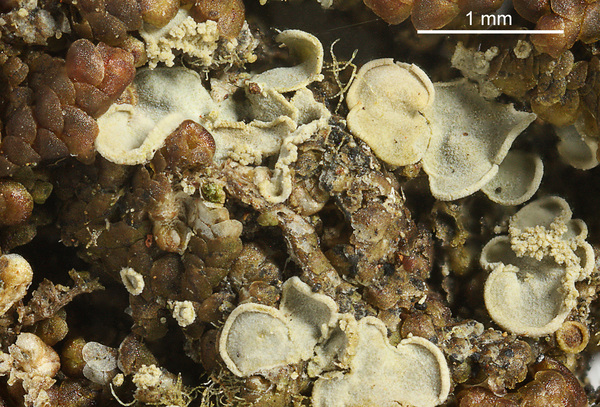

Felix Schumm – CC BY-SA 4.0
[14246], Portugal, Azoren, NW-Terceira, zwischen Biscoitos und Bagacina am Rastplatz neben der Abzweigung nach Caparica, 38°46.2492' N, 27°15.736' W, ca. 350 m. Leg. et det. Schumm 18.07.2008
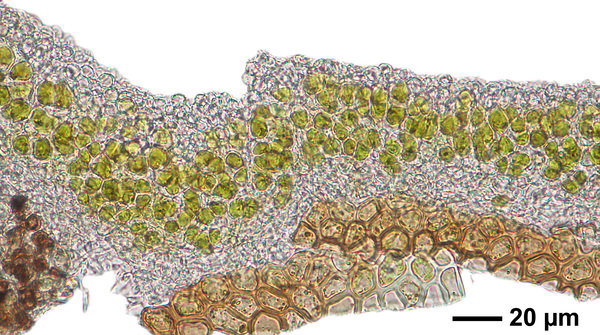

Felix Schumm – CC BY-SA 4.0
[14246], Portugal, Azoren, NW-Terceira, zwischen Biscoitos und Bagacina am Rastplatz neben der Abzweigung nach Caparica, 38°46.2492' N, 27°15.736' W, ca. 350 m. Leg. et det. Schumm 18.07.2008
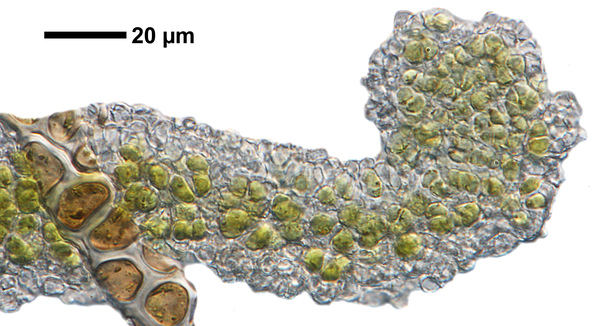

Felix Schumm – CC BY-SA 4.0
[14246], Portugal, Azoren, NW-Terceira, zwischen Biscoitos und Bagacina am Rastplatz neben der Abzweigung nach Caparica, 38°46.2492' N, 27°15.736' W, ca. 350 m. Leg. et det. Schumm 18.07.2008
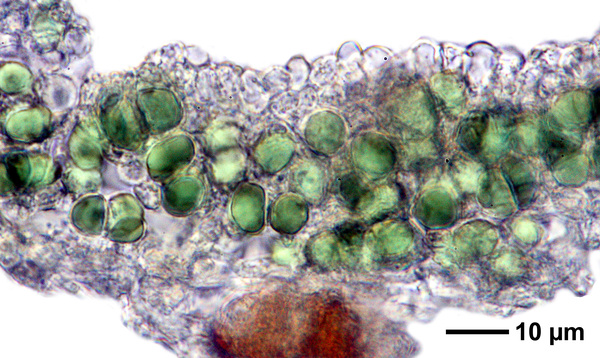

Felix Schumm – CC BY-SA 4.0
[14246], Portugal, Azoren, NW-Terceira, zwischen Biscoitos und Bagacina am Rastplatz neben der Abzweigung nach Caparica, 38°46.2492' N, 27°15.736' W, ca. 350 m. Leg. et det. Schumm 18.07.2008
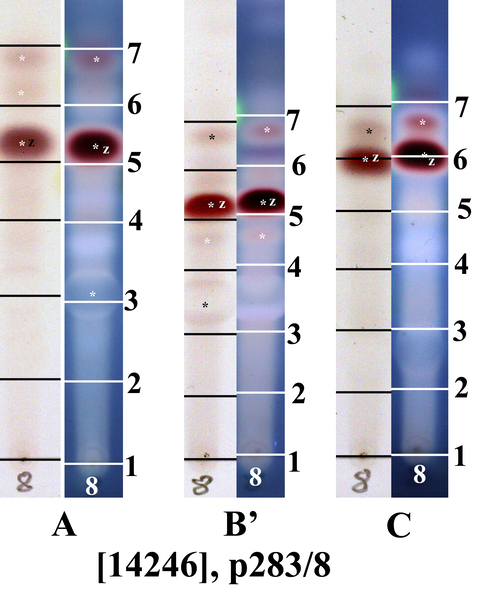

Felix Schumm – CC BY-SA 4.0
[14246], Portugal, Azoren, NW-Terceira, zwischen Biscoitos und Bagacina am Rastplatz neben der Abzweigung nach Caparica, 38°46.2492' N, 27°15.736' W, ca. 350 m. Leg. et det. Schumm 18.07.2008
HPTLC in den Laufmitteln A, B’ und C nach Säurebehandlung bei
Tageslicht und 366 nm UV-Langwelle.
1: Start,
4: Position von Norstictinsäure,
7: Position von Atranorin,
z: Zeorin


P.L. Nimis; Owner: Department of Life Sciences, University of Trieste
Herbarium: TSB (35079)
2002/05/02
habitus
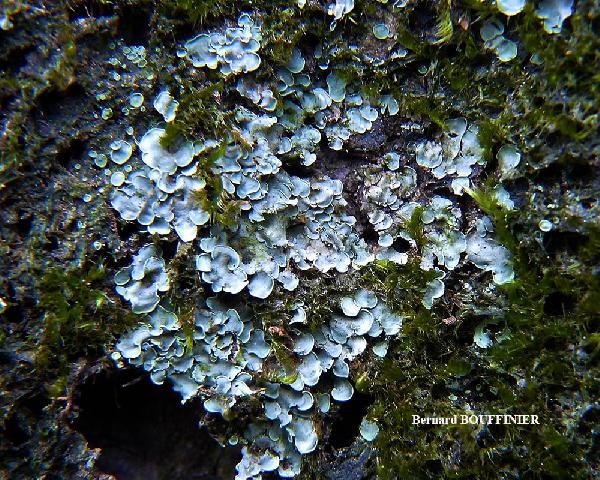
Bernard Bouffinier - Source: http://www.lichensmaritimes.org/index.php?task=fiche&lichen=364&lang=en
France, Le Poulmic
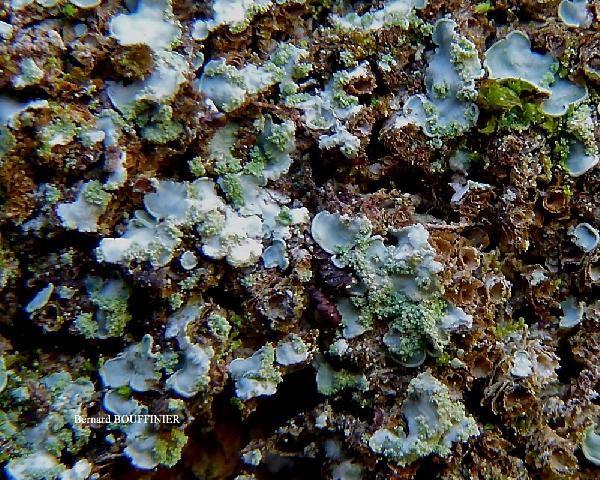
Bernard Bouffinier - Source: http://www.lichensmaritimes.org/index.php?task=fiche&lichen=364&lang=en
France, Crozon
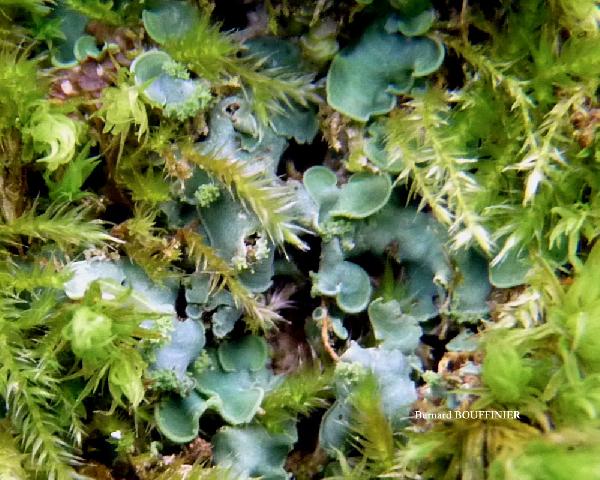
Bernard Bouffinier - Source: http://www.lichensmaritimes.org/index.php?task=fiche&lichen=364&lang=en
France, Crozon
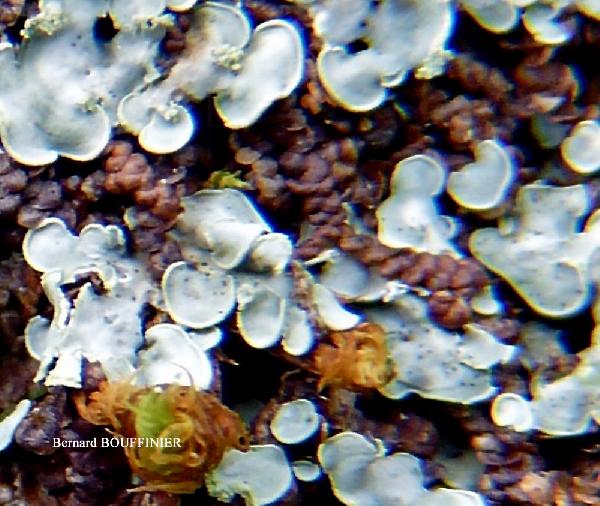
Bernard Bouffinier - Source: http://www.lichensmaritimes.org/index.php?task=fiche&lichen=364&lang=en
France, Crozon
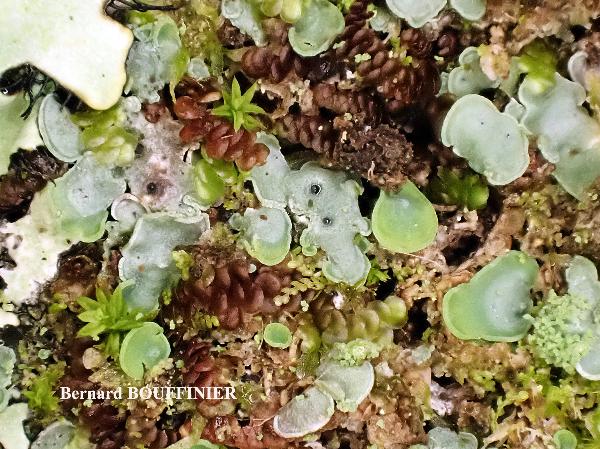
Bernard Bouffinier - Source: http://www.lichensmaritimes.org/index.php?task=fiche&lichen=364&lang=en
France, Briec
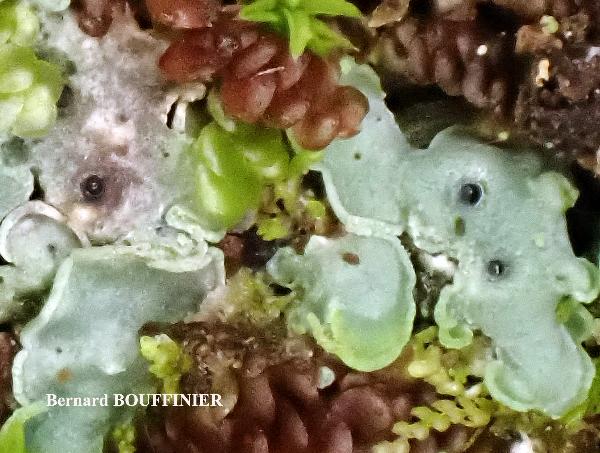
Bernard Bouffinier - Source: http://www.lichensmaritimes.org/index.php?task=fiche&lichen=364&lang=en
France, Briec

Michel David- Source: http://www.lichensmaritimes.org/index.php?task=fiche&lichen=364&lang=en
France, Argol
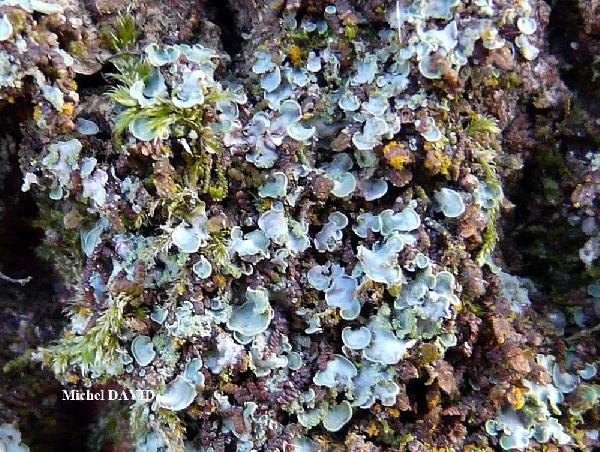
Michel David- Source: http://www.lichensmaritimes.org/index.php?task=fiche&lichen=364&lang=en
France, Argol
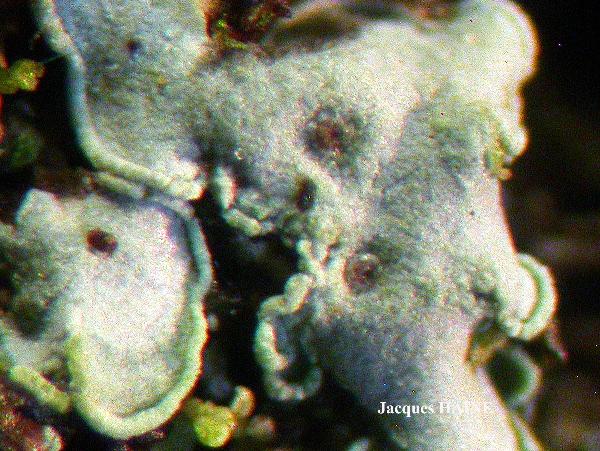
Jacques Haine - Source: http://www.lichensmaritimes.org/index.php?task=fiche&lichen=364&lang=en
France, Crozon

Jacques Haine - Source: http://www.lichensmaritimes.org/index.php?task=fiche&lichen=364&lang=en
France, Crozon

Jacques Haine - Source: http://www.lichensmaritimes.org/index.php?task=fiche&lichen=364&lang=en
France, Crozon
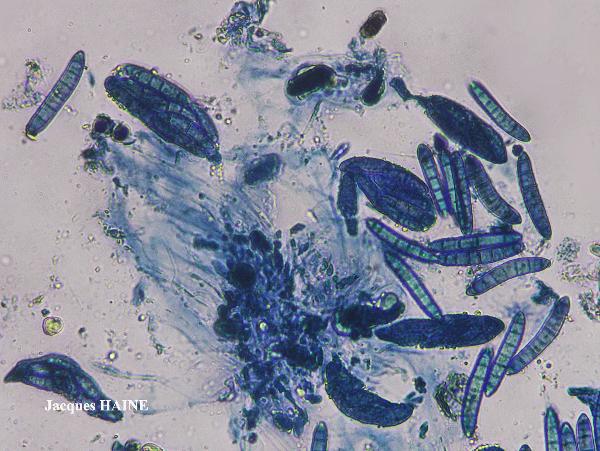
Jacques Haine - Source: http://www.lichensmaritimes.org/index.php?task=fiche&lichen=364&lang=en
France, Crozon
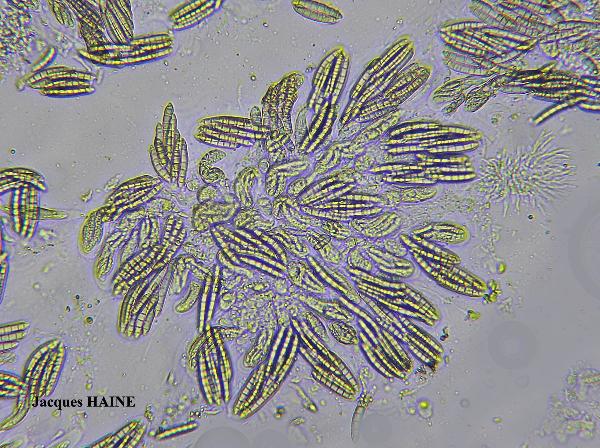
Jacques Haine - Source: http://www.lichensmaritimes.org/index.php?task=fiche&lichen=364&lang=en
France, Crozon
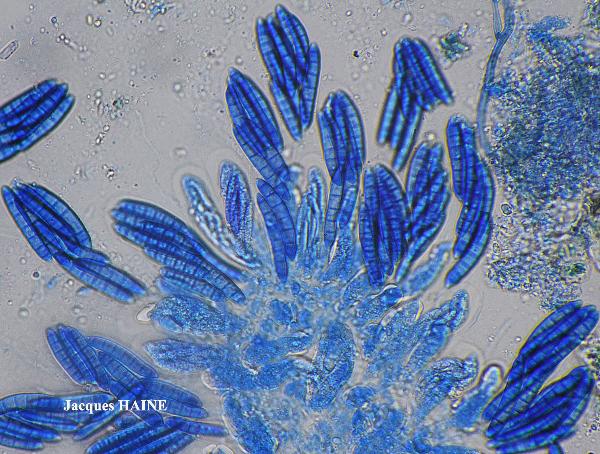
Jacques Haine - Source: http://www.lichensmaritimes.org/index.php?task=fiche&lichen=364&lang=en
France, Crozon
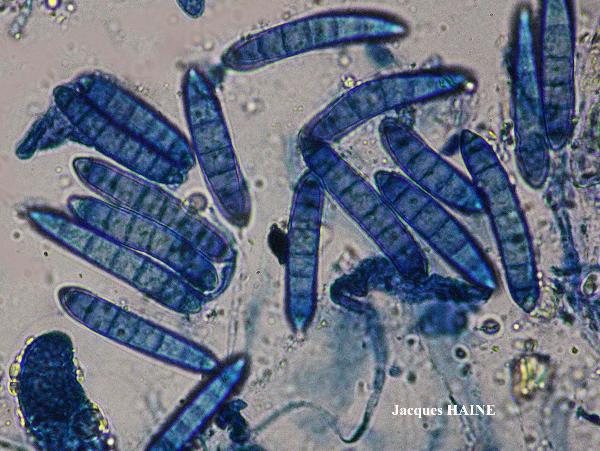
Jacques Haine - Source: http://www.lichensmaritimes.org/index.php?task=fiche&lichen=364&lang=en
France, Crozon
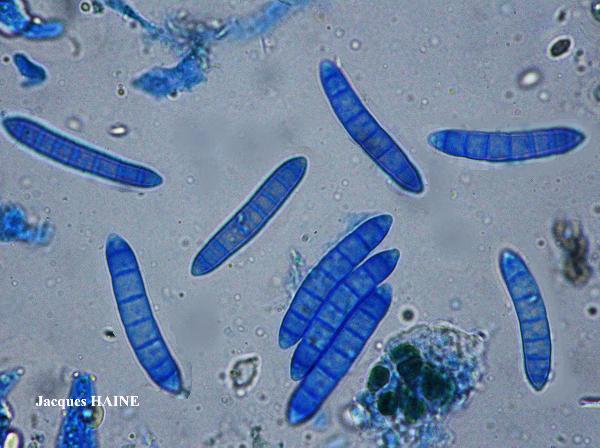
Jacques Haine - Source: http://www.lichensmaritimes.org/index.php?task=fiche&lichen=364&lang=en
France, Crozon
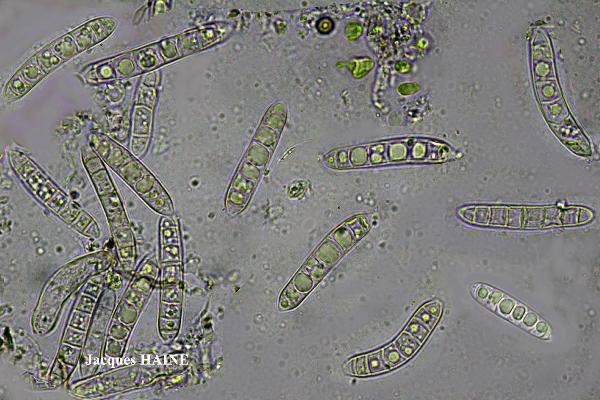
Jacques Haine - Source: http://www.lichensmaritimes.org/index.php?task=fiche&lichen=364&lang=en
France, Crozon
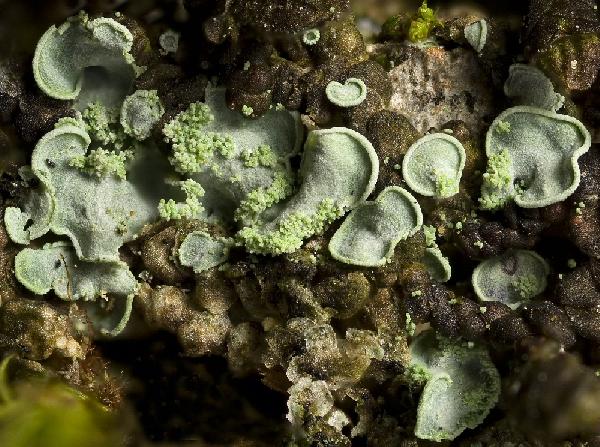
Ulrich Kirschbaum CC BY-SA 4.0 - Source: https://www.thm.de/lse/ulrich-kirschbaum/flechtenbilder
Central Europe; Germany; Baden-Württemberg: Black Forest.


Felix Schumm - CC BY 4.0
[15015], La Reunion, beim Kraterrand des Piton Maido, Ginster-Erica-
Gebüschvegetation mit Lavablöcken; 21,07100°S, 55,38788°E, 2090
m.Leg. F. Schumm & J.-P. Frahm, 07.09.2009, det. F. Schumm 2009.
Growth form: Squamulose
Substrata: bark
Photobiont: green algae other than Trentepohlia
Reproductive strategy: mainly asexual, by soredia, or soredia-like structures (e.g. blastidia)
Most common in areas with a humid-warm climate (e.g. most of Tyrrenian Italy)
Commonnes-rarity: (info)
Alpine belt: absent
Subalpine belt: absent
Oromediterranean belt: absent
Montane belt: rare
Submediterranean belt: rather rare
Padanian area: extremely rare
Humid submediterranean belt: rather common
Humid mediterranean belt: rather rare
Dry mediterranean belt: absent

Predictive model
| Herbarium samples |


Felix Schumm – CC BY-SA 4.0
[14246], Portugal, Azoren, NW-Terceira, zwischen Biscoitos und Bagacina am Rastplatz neben der Abzweigung nach Caparica, 38°46.2492' N, 27°15.736' W, ca. 350 m. Leg. et det. Schumm 18.07.2008


Felix Schumm – CC BY-SA 4.0
[14246], Portugal, Azoren, NW-Terceira, zwischen Biscoitos und Bagacina am Rastplatz neben der Abzweigung nach Caparica, 38°46.2492' N, 27°15.736' W, ca. 350 m. Leg. et det. Schumm 18.07.2008


Felix Schumm – CC BY-SA 4.0
[14246], Portugal, Azoren, NW-Terceira, zwischen Biscoitos und Bagacina am Rastplatz neben der Abzweigung nach Caparica, 38°46.2492' N, 27°15.736' W, ca. 350 m. Leg. et det. Schumm 18.07.2008


Felix Schumm – CC BY-SA 4.0
[14246], Portugal, Azoren, NW-Terceira, zwischen Biscoitos und Bagacina am Rastplatz neben der Abzweigung nach Caparica, 38°46.2492' N, 27°15.736' W, ca. 350 m. Leg. et det. Schumm 18.07.2008


Felix Schumm – CC BY-SA 4.0
[14246], Portugal, Azoren, NW-Terceira, zwischen Biscoitos und Bagacina am Rastplatz neben der Abzweigung nach Caparica, 38°46.2492' N, 27°15.736' W, ca. 350 m. Leg. et det. Schumm 18.07.2008
HPTLC in den Laufmitteln A, B’ und C nach Säurebehandlung bei
Tageslicht und 366 nm UV-Langwelle.
1: Start,
4: Position von Norstictinsäure,
7: Position von Atranorin,
z: Zeorin


P.L. Nimis; Owner: Department of Life Sciences, University of Trieste
Herbarium: TSB (35079)
2002/05/02
habitus

Bernard Bouffinier - Source: http://www.lichensmaritimes.org/index.php?task=fiche&lichen=364&lang=en
France, Le Poulmic

Bernard Bouffinier - Source: http://www.lichensmaritimes.org/index.php?task=fiche&lichen=364&lang=en
France, Crozon

Bernard Bouffinier - Source: http://www.lichensmaritimes.org/index.php?task=fiche&lichen=364&lang=en
France, Crozon

Bernard Bouffinier - Source: http://www.lichensmaritimes.org/index.php?task=fiche&lichen=364&lang=en
France, Crozon

Bernard Bouffinier - Source: http://www.lichensmaritimes.org/index.php?task=fiche&lichen=364&lang=en
France, Briec

Bernard Bouffinier - Source: http://www.lichensmaritimes.org/index.php?task=fiche&lichen=364&lang=en
France, Briec

Michel David- Source: http://www.lichensmaritimes.org/index.php?task=fiche&lichen=364&lang=en
France, Argol

Michel David- Source: http://www.lichensmaritimes.org/index.php?task=fiche&lichen=364&lang=en
France, Argol

Jacques Haine - Source: http://www.lichensmaritimes.org/index.php?task=fiche&lichen=364&lang=en
France, Crozon

Jacques Haine - Source: http://www.lichensmaritimes.org/index.php?task=fiche&lichen=364&lang=en
France, Crozon

Jacques Haine - Source: http://www.lichensmaritimes.org/index.php?task=fiche&lichen=364&lang=en
France, Crozon

Jacques Haine - Source: http://www.lichensmaritimes.org/index.php?task=fiche&lichen=364&lang=en
France, Crozon

Jacques Haine - Source: http://www.lichensmaritimes.org/index.php?task=fiche&lichen=364&lang=en
France, Crozon

Jacques Haine - Source: http://www.lichensmaritimes.org/index.php?task=fiche&lichen=364&lang=en
France, Crozon

Jacques Haine - Source: http://www.lichensmaritimes.org/index.php?task=fiche&lichen=364&lang=en
France, Crozon

Jacques Haine - Source: http://www.lichensmaritimes.org/index.php?task=fiche&lichen=364&lang=en
France, Crozon

Jacques Haine - Source: http://www.lichensmaritimes.org/index.php?task=fiche&lichen=364&lang=en
France, Crozon

Ulrich Kirschbaum CC BY-SA 4.0 - Source: https://www.thm.de/lse/ulrich-kirschbaum/flechtenbilder
Central Europe; Germany; Baden-Württemberg: Black Forest.


 INDEX FUNGORUM
INDEX FUNGORUM
 GBIF
GBIF
 DOLICHENS
DOLICHENS
